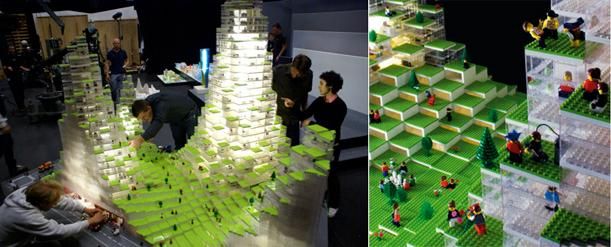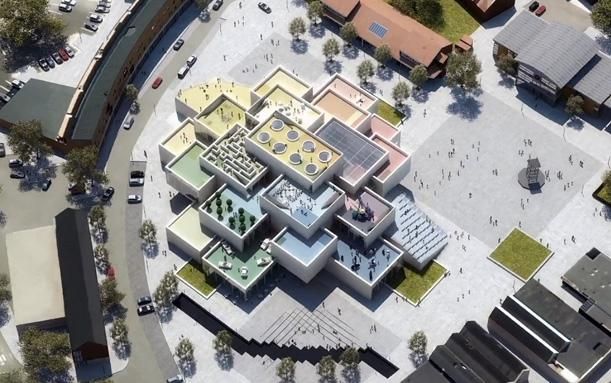BIG Plans for a Lego Museum in Denmark
Some architects played with Legos as a child. And some never stopped playing with them
/https://tf-cmsv2-smithsonianmag-media.s3.amazonaws.com/filer/Design-Decoded-Lego-Museum-Denmark.png)
Some architects played with Legos as a child. And some never stopped playing with them. Take, for instance, the Copenhagen and New York-based architecture firm Bjarke Ingels Group (BIG) –the architects currently developing a master plan for the Smithsonian Institution in Washington D.C– who have designed two major projects involving the snap together bricks, including a new Lego Museum in the toymaker’s hometown.
Now, bricks are good for two things: building a wall and throwing through a window. Lego bricks aren’t any different, as illustrated by BIG. Though they may not have literally thrown them through any windows (that I’m aware of), the cool playfulness that pervades BIG’s work is a metaphorical brick thrown through the windows of modernism’s glass skyscrapers. BIG’s high-wire high-rise designs, which have more in common with mountain ranges than Manhattan, shatter architectural preconceptions and the aloof, over-serious sensibility that pervades the profession. In less than 10 years, the firm, founded in 2005 by Bjarke Ingels, have blossomed from a scrappy Rem Koolhaas-inspired startup with great PR to a widely recognized, innovative global design practice with major commissions in major cities the world over.

In 2007, the burgeoning firm exhibited a model of a mixed-use development inspired by the stacking construction of Lego bricks. The architects call their project “a Scandinavian high-rise typology incorporating the rationality and modularity of the Danish building tradition” – a tradition that proudly includes Lego. To make its inspiration explicit, BIG built “Lego Towers” using 250,000 Lego bricks. The unique model material also reinforces the concept of the towers as an extension of landscape – using the pixel-like blocks, the pixelated buildings seamlessly merge with / emerge from the pixelated landscape. Lego Towers was just a concept, but five years later BIG would have the chance to apply their Lego prowess to a commission from Lego itself.

In June BIG unveiled their design for The Lego House, an “experience and education centre” in Billund, Denmark, scheduled to open in 2016. “It’s going to be looking at Lego from all its different aspects,” says Ingels. “Lego as an art form, its cultural impact. When we were doing the research for it, we realized, if you would consider it just an art museum, you would be able to fill it with so much user content of such a high quality.”
That quality content will be housed in 7,600 square meters of exhibition space, designed in collaboration with Ralph Appelbaum Associates, along with a cafe, a flagship Lego store, and lots of public space. But the project will be more than just a museum. It will be an embodiment of Lego’s ideals. Lego owner Kjeld Kirk Kristiansen, says “the Lego House will show the past, present and future of the Lego idea…. and the Lego House gives us an opportunity to make it very tangible what Lego play offers and how it stimulates children’s creativity and learning.” BIG haven’t created a Lego model for the project (yet), which is still being designed, but a conceptual animation reveals the firm’s approach.
Unsurprisingly, the building’s form and spaces were inspired by Lego blocks and it looks like they could be easily recreated with the iconic plastic bricks. In fact, the white and transparent building actually looks a lot like it was built using pieces from the recently released Lego Architecture Studio. Yet it’s doubtful that builders looking to recreate the building will be left to their own devices – or their own bricks. Surely Lego will manufacture an exclusive “experience centre” set so that their own building can join the masterworks of the Architecture Series and visitors will be able to walk away with their own special souvenir Lego replica of the Lego House.
/https://tf-cmsv2-smithsonianmag-media.s3.amazonaws.com/accounts/headshot/Jimmy-Stamp-240.jpg)
/https://tf-cmsv2-smithsonianmag-media.s3.amazonaws.com/accounts/headshot/Jimmy-Stamp-240.jpg)